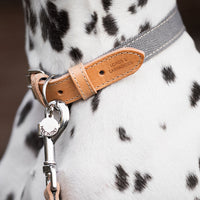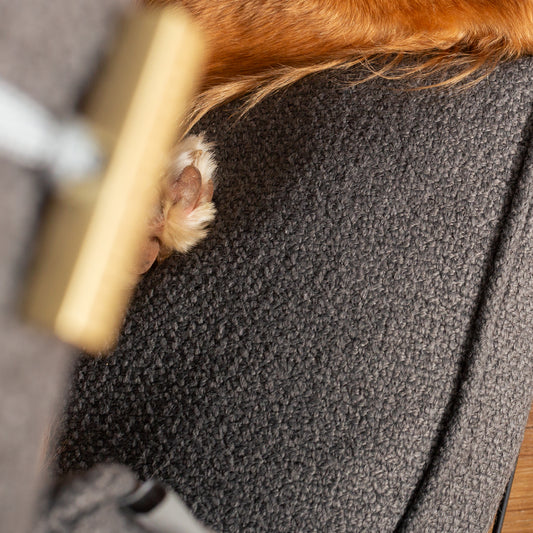With the lovely weather that Spring brings with it, there are a number of other changes to the environment too. The flora and fauna of the countryside begins to flourish and many species that have been hiding during the colder months, begin to reappear. One of the species that begins to make an appearance at this time of year is the Oak Processionary Moth Caterpillar which are mainly seen between May and July in woodland areas. These caterpillars contain a substance that is toxic to dogs and can irritate their eyes and throat.
With May being Walk in the Woods month, we thought we’d highlight the problems that OPM Caterpillars can cause. In this blog we will take a closer look at the OPM Caterpillar, tell you how to identify it and explain what to do if you think your dog has come into contact with it.
What Is An Oak Processionary Moth Caterpillar?

The oak Processionary is a type of moth whose caterpillars are often found in Oak trees. They tend to travel in lines, nose-to-tail, hence their name. Their bodies are covered in thousands of tiny hairs which can come away from their bodies and blow about in the wind. These hairs are incredibly irritating to pets and people causing itching, amongst other problems.
What If My Dog Touches An Oak Processionary Moth Caterpillar?
Dogs love to be nosey and part of the fun of dog walks is sniffing out new and exciting things. If you’re walking in woodland your dog will love exploring the new surroundings and may well come across all kinds of things.
If your dog comes into contact with an OPM; that could be sniffing, licking, picking up or eating one, you may notice a range of symptoms such as swelling, drooling, gagging, eye irritation, vomiting or difficulty breathing. Generally, symptoms won’t go any further than irritation, but it’s still best to call your vet for advice. In rare case, dogs can suffer allergic reactions in which case you should take your dog to the vet immediately.
Can I Protect My Dog From Oak Processionary Moth Caterpillars?
If you notice these caterpillars on your travels, you need to do your best to keep your dog away from them. If they’re walking off the lead, call them back to you and keep them at heel. If you notice any of the symptoms mentioned previously, give your vet a call for advice. Serious allergies are rare, but it’s best that you monitor your pet’s condition over the following days.
The best thing to do is try to keep them away from the caterpillars altogether as there are no vaccines to prevent irritation or allergies.
Where Do Oak Processionary Moth Caterpillars Live?

The caterpillars are found in woodland areas but can also end up in gardens and other outdoor spaces. They are mainly found in southern parts of the UK including London, Berkshire, Essex, Surrey and the surrounding areas.
This doesn’t mean they won’t be found elsewhere though, and it’s worth keeping an eye out for them on any woodland dog walk.
Do Oak Processionary Moth Caterpillars Harm Humans?
The effects of touching an OPM caterpillar tend to be more irritable than serious. Many people develop itchy eyes, sore throats or rashes whilst only a rare few suffer serious allergies.
If you need to help remove a caterpillar from your dog, it would be best to do so whilst wearing rubber gloves to help protect your skin and dispose accordingly.
What Should I Do If I Find An Oak Processionary Moth Caterpillar?
Oak Processionary Moths are not native to the UK but were accidentally imported. If you think you have found one you can report the sighting to the Forestry Commission.
Have fun and stay safe on your dog walks

Dog walks should be fun wherever you go. With a little care and attention, you’ll soon be enjoying adventures in the woods with your four-legged friend. As we mentioned earlier, it’s Walk in the Woods month and we wrote a dedicated article all about dog safety in the woods. If you’d like to take a look, you can read the blog post here.






































































































